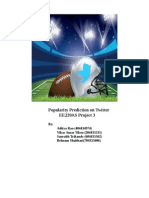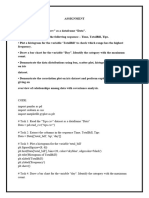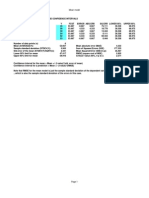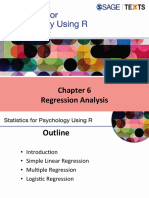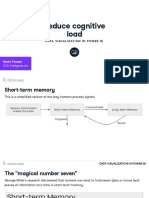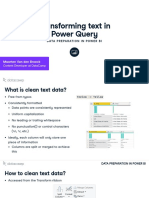0% found this document useful (0 votes)
26 views39 pagesChapter 2
The document discusses regression analysis using statsmodels in Python. It introduces a fish dataset containing mass and length measurements and builds a linear regression model to predict mass from length. It demonstrates using the model to make predictions on new length data and plots the predictions against the original data. The document also discusses attributes of the model object like parameters, fitted values, residuals and the summary method.
Uploaded by
Komi David ABOTSITSECopyright
© © All Rights Reserved
We take content rights seriously. If you suspect this is your content, claim it here.
Available Formats
Download as PDF, TXT or read online on Scribd
0% found this document useful (0 votes)
26 views39 pagesChapter 2
The document discusses regression analysis using statsmodels in Python. It introduces a fish dataset containing mass and length measurements and builds a linear regression model to predict mass from length. It demonstrates using the model to make predictions on new length data and plots the predictions against the original data. The document also discusses attributes of the model object like parameters, fitted values, residuals and the summary method.
Uploaded by
Komi David ABOTSITSECopyright
© © All Rights Reserved
We take content rights seriously. If you suspect this is your content, claim it here.
Available Formats
Download as PDF, TXT or read online on Scribd
/ 39












